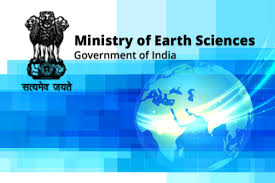Draft Blue Economy Policy for India:

The Ministry of Earth Sciences has asked for suggestions on the Draft Blue Economy Policy for India. The stakeholders such as NGOs, industry, academia, and citizens have been asked to submit their inputs and ideas by 27th February 2021.
- The Draft Blue Economy Policy was created by the government outlining the vision and strategy that can be adapted to utilize the oceanic resources that are available to the country.
- The policy was drafted with the aim of enhancing the contribution of the blue economy to India’s GDP.
- It also seeks to improve the lives of coastal communities and preserve marine biodiversity.
- It will also maintain the national security of the marine areas and resources.
- The draft blue economy document has recognized the seven thematic areas such as:
- National accounting framework of the blue economy and ocean governance;
- Coastal marine spatial planning and tourism;
- Marine fisheries, fish processing, and Aquaculture
- Manufacturing, services, trade, technology, and skill development;
- Logistics, infrastructure, and shipping
- Coastal & deep-sea mining and
- Offshore energy & security, strategic dimensions, and international engagements.
- Thus, the blue economy of India is a subset of the national economy that caters to the entire ocean resources system.
- The policy also caters to the human-made economic infrastructure in marine, maritime, and onshore coastal zones in India’s jurisdiction.
- The policy is also linked with the production of goods and services which is ultimately linked with economic growth, environmental sustainability, and national security.
- The draft policy also suggests offering the Blue Economy-related educational programs comprising of various technical and managerial skills in universities and technical institutes along with the coastal states of India.
Blue Economy:
- The concept of the blue economy aspires to promote economic growth and social inclusion. It is also involved in the preservation or improvement of livelihoods.
- It also seeks to ensure environmental sustainability in the oceans and coastal areas.
- It comprises the sectors for which the returns are linked to living renewable resources in the oceans like fisheries.
- It also comprises the sectors whose return comes from non-living & non-renewable resources including seabed mining, dredging, and offshore oil & gas extractions.




